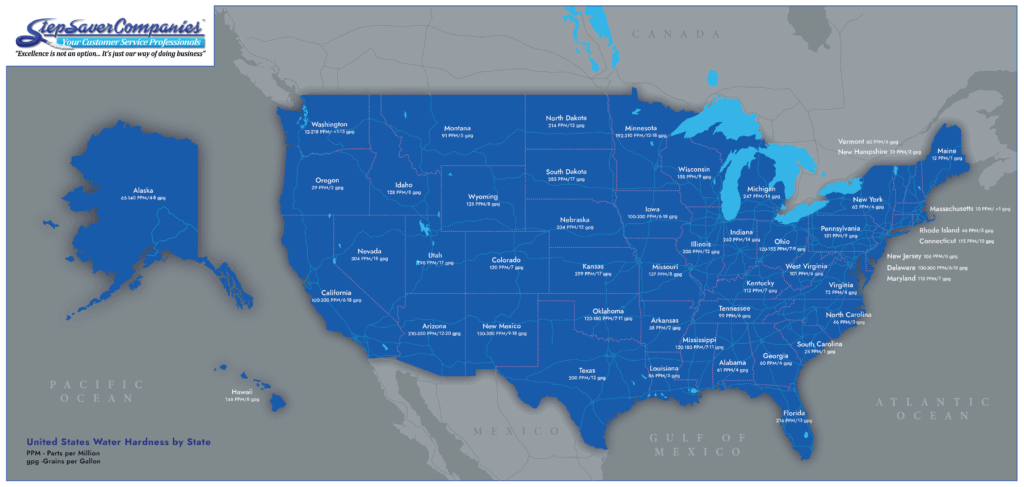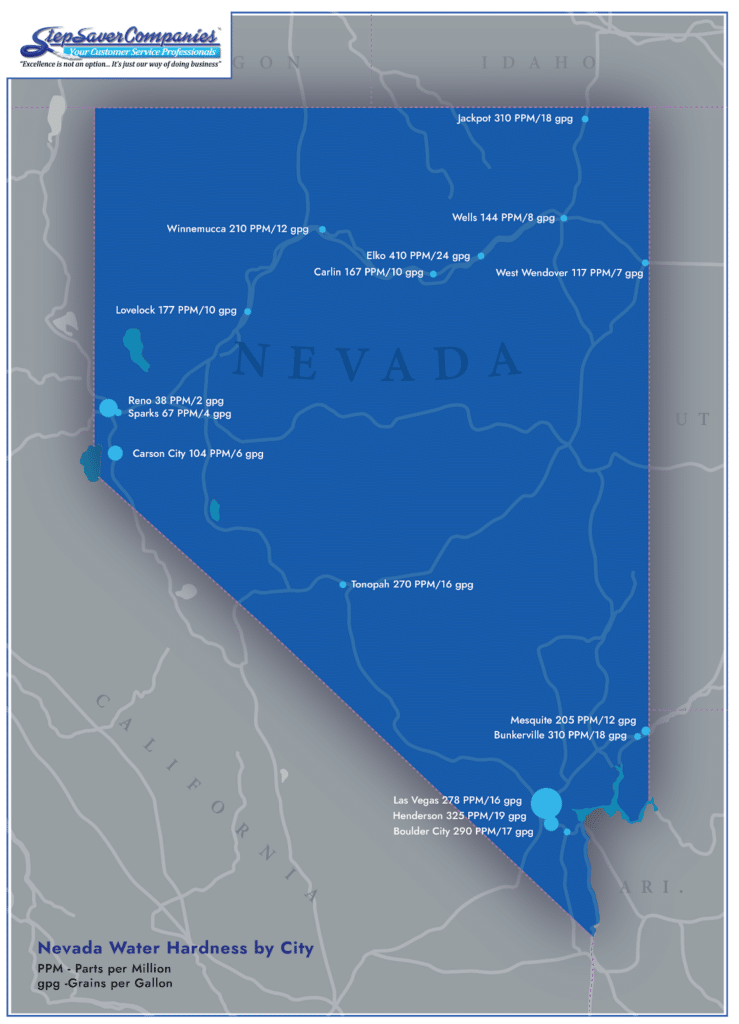Water is an essential resource in any workplace, ensuring employees stay hydrated, maintain hygiene, and work in a safe environment. The Occupational Safety and Health Administration (OSHA) sets strict standards for water access and quality in workplaces across various industries. Understanding OSHA water requirements can help employers maintain compliance and protect their workforce. Let’s explore 8 key things to know about OSHA’s water regulations:
1. Employers Must Provide Safe and Accessible Drinking Water
One of the fundamental requirements of OSHA drinking water is that your employers provide water that is safe and readily accessible for all employees. Water must be free from contaminants, including bacteria, harmful chemicals, and physical debris. Employers cannot force employees to bring their own drinking water or rely on external sources to meet hydration needs. OSHA also prohibits charging employees for drinking water, as access to clean and safe water is considered a basic workplace necessity. Additionally, any water that does not meet potable standards must be labeled as non-drinkable to prevent accidental consumption.
2. Potable Water Must Meet Health and Safety Standards
Potable water is defined by OSHA potable water requirements as water that is safe for human consumption. This includes tap water, bottled water, and water dispensed from approved filtration systems. Employers must ensure that potable water is available in sufficient quantities throughout the workday. This means that workplaces must provide enough drinking water for all employees, especially in environments where high temperatures or physical labor increase water consumption needs. If an employer provides a water cooler or dispenser, it must be kept clean, regularly maintained, and refilled as necessary to prevent shortages.
3. Water Quality Must Comply with OSHA and EPA Standards
OSHA refers to the Environmental Protection Agency (EPA) standards for water safety, ensuring that water is free from bacteria, chemicals, and physical contaminants. OSHA drinking water standards require that water must be free from microbial, chemical, and physical contaminants. Water should be clear and odor-free. If water quality is in question, testing may be necessary to ensure compliance. Businesses should have a plan in place to monitor water quality and respond to any contamination concerns immediately.
4. Construction Sites Require Extra Precautions for Hydration
There are additional regulations regarding OSHA drinking water requirements on construction sites. Due to the nature of construction work, where workers are often exposed to extreme weather conditions, including extreme heat, which increases the risk of dehydration. OSHA requires that employers provide sufficient amounts of cool, potable water in easily accessible locations. Simply having a water source on-site is not enough—water must be placed close to work areas, and employees must be given enough time to hydrate. If water is stored in large containers, these containers must be properly covered, frequently cleaned, and refilled with safe drinking water to prevent contamination. Hydration is critical in construction work, as dehydration can lead to heat stress, reduced concentration, and even serious health risks such as heatstroke.
5. Drinking Water Must Be Cool and Accessible
While OSHA does not specify an exact temperature for drinking water, it requires that it be cool and palatable. This means that drinking water should not be excessively warm and should be stored in insulated containers when necessary to maintain a suitable temperature. When it comes to OSHA hot water temperature regulations, certain standards exist for water used in sanitation and handwashing facilities. OSHA recommends that hot water for handwashing stations should not exceed 110℉ (43℃) to prevent scalding injuries. Additionally, workplaces that require handwashing stations must ensure that both hot and cold water is available. These requirements are crucial in food service, healthcare, and industries where sanitation is a priority.
6. Water Must Be Dispensed in a Sanitary Manner
OSHA has strict rules regarding how drinking water should be stored and dispensed to prevent contamination. Some key regulations include:
- Water must be dispensed through sanitary means, such as fountains, coolers, or sealed containers.
- Open containers, such as barrels or buckets, are not acceptable for potable water storage.
- Disposable cups must be provided unless water is dispensed through fountains or other sanitary devices.
- Shared cups or dippers are strictly prohibited to prevent the spread of germs and diseases.
- If water is stored in a large dispenser, it must be regularly cleaned and refilled with fresh potable water.
By ensuring proper water dispensing practices, employers can minimize the risk of contamination and promote workplace health.
7. Non-Potable Water Must Be Clearly Marked and Separated
Employers must ensure that any non-potable water sources are clearly labeled and kept separate from drinking water sources. OSHA’s potable water mandate requires that water not suitable for drinking, food preparation, or personal hygiene must be identified with signage that clearly states “Not For Drinking” or an equivalent warning. This is particularly important in industries such as manufacturing, construction, and agriculture, when non-potable water may be used for cooling equipment, irrigation, or cleaning machinery. Proper signage prevents employees from mistakenly consuming unsafe water, which can lead to serious health issues.
8. Handwashing Station Must Provide Safe, Temperature-Controlled Water
Workplaces that require handwashing stations must provide both hot and cold running water, soak, and hygienic drying methods such as disposable towels or air dryers. This is especially important in industries such as healthcare, food service, and hospitality, where sanitation is a top priority. OSHA hot water temperature regulations ensure that water is warm enough to facilitate proper handwashing without posing a burn risk. Employers must ensure that all restroom and handwashing stations are kept clean and operational at all times. Failing to meet these requirements can result in health code violations, fines, and increased workplace illness.
Enforcing OSHA’s Drinking Water Regulations in the Workplace & Consequences of Non-Compliance
Employers must actively enforce OSHA requirements for water by conducting regular inspections and maintaining records of compliance. Key steps include:
- Ensuring all water sources meet safety standards.
- Clearly marking non-potable water sources.
- Providing clean and sanitary drinking stations.
- Monitoring water temperature for hygiene purposes.
- Training employees on the importance of hydration and water safety.
Failure to comply with OSHA drinking water rules can result in penalties, fines, and even workplace injuries. OSHA may conduct inspections to ensure compliance, and violations can lead to hefty fines, increased workplace illnesses due to contaminated water, and even legal liability if employees suffer from dehydration or heat-related illnesses due to lack of drinking water.
Meeting OSHA water requirements is not just about compliance—it’s about safeguarding employee health and productivity. Whether in an office, factory, or construction site, employers must ensure safe, potable drinking water is always available. By understanding OSHA’s potable water requirements and OSHA’s drinking water regulations, businesses can create safer, more compliant workplaces while promoting the well-being of other employees.
Ensure Compliance with OSHA Water Requirements with Step Saver
At Step Saver, we help businesses comply with OSHA water requirements through our high-quality water treatment solutions. Our innovative softener maintenance, salt delivery services, and reverse osmosis systems ensure your workplace has clean, safe, and readily available water.
Our patented bagless salt delivery system eliminates waste and mess, keeping your water treatment equipment running efficiently. With highly trained technicians, we provide more than just deliveries—we offer expert insights and tailored water treatment solutions to ensure OSHA compliance.
Since 1995, Step Saver has been a trusted provider of water treatment services across Nevada, California, and Utah. Don’t let water quality compliance become a burden—partner with Step Saver for reliable, hassle-free solutions. Contact us today to schedule your service and keep your workplace up to OSHA’s water safety standards!



